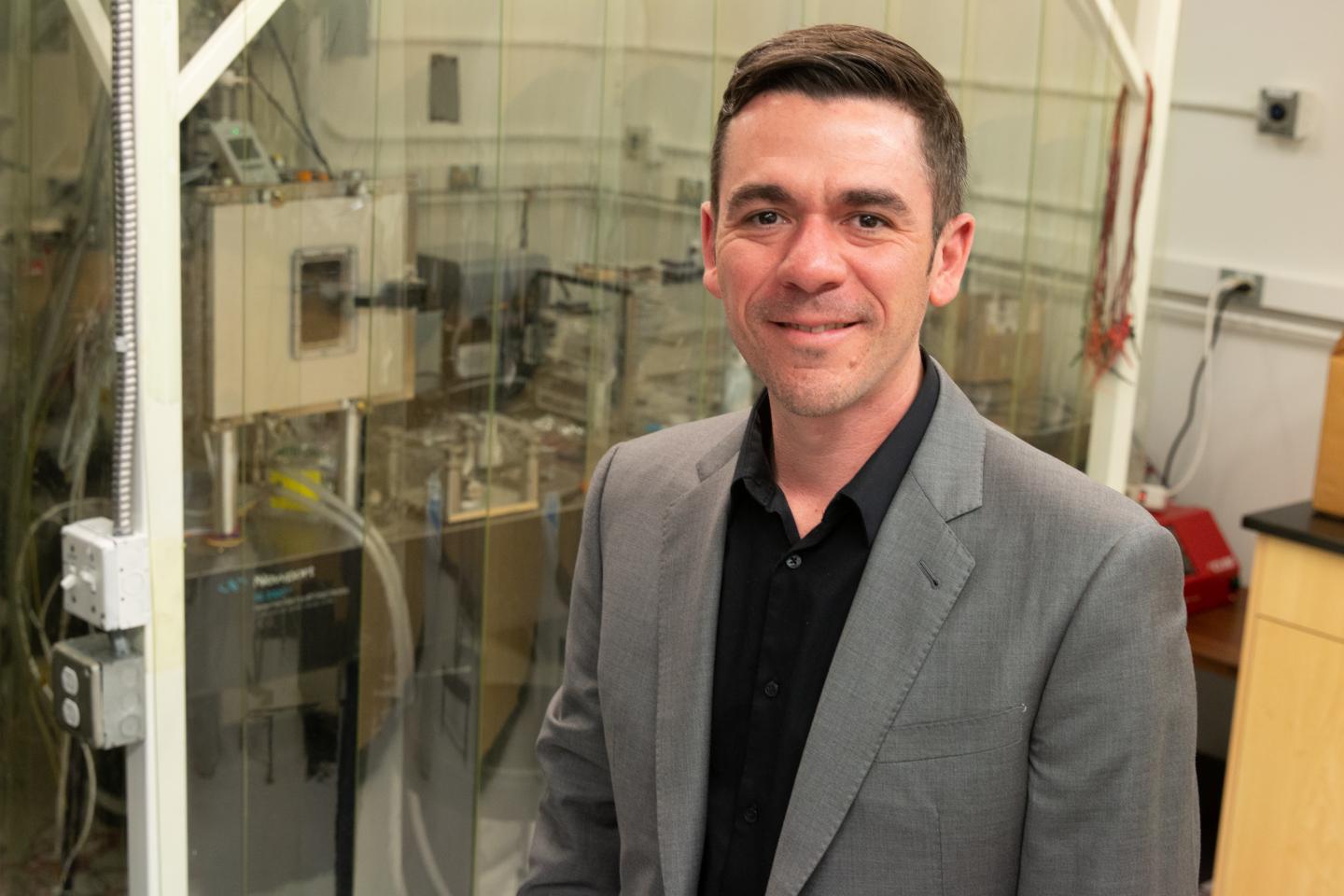University of Utah engineers develop chip that converts wasted heat to usable energy

Credit: Dan Hixson/University of Utah College of Engineering
It’s estimated that as much as two-thirds of energy consumed in the U.S. each year is wasted as heat. Take for example, car engines, laptop computers, cell phones, even refrigerators, that heat up with overuse.
Imagine if you could capture the heat they generate and turn it into more energy.
University of Utah mechanical engineering associate professor Mathieu Francoeur has discovered a way to produce more electricity from heat than thought possible by creating a silicon chip, also known as a “device,” that converts more thermal radiation into electricity. His findings were published in the paper, A Near-Field Radiative Heat Transfer Device, in the newest issue of Nature Nanotechnology.
Researchers have previously determined that there is a theoretical “blackbody limit” to how much energy can be produced from thermal radiation (heat). But Francoeur and his team have demonstrated that they can go well beyond the blackbody limit and produce more energy if they create a device that uses two silicon surfaces very close together. The team produced a 5mm-by-5mm chip (about the size of an eraser head) of two silicon wafers with a nanoscopic gap between them only 100 nanometers thick, or a thousandth the thickness of a human hair. While the chip was in a vacuum, they heated one surface and cooled another surface, which created a heat flux that can generate electricity. The concept of creating energy in this manner is not unique, but Francoeur and his team have discovered a way to fit the two silicon surfaces uniformly close together at a microscopic scale without touching each other. The closer they are to each other, the more electricity they can generate.
“Nobody can emit more radiation than the blackbody limit,” he said. “But when we go to the nanoscale, you can.”
In the future, Francoeur envisions that such technology could be used to not only cool down portable devices like laptops and smartphones but also to channel that heat into more battery life, possibly as much as 50% more. A laptop with a six-hour charge could jump to nine hours, for example.
The chips could be used to improve the efficiency of solar panels by increasing the amount of electricity from the sun’s heat or in automobiles to take the heat from the engine to help power the electrical systems. They could also be designed to fit in implantable medical devices such as a pacemaker that would not require replaceable batteries.
Another benefit is such technology can help improve the life of computer processors by keeping them cool and reducing wear and tear, and it will save more energy otherwise used for fans to cool the processors. It also could help improve the environment, Francoeur argued.
“You put the heat back into the system as electricity,” he said. “Right now, we’re just dumping it into the atmosphere. It’s heating up your room, for example, and then you use your AC to cool your room, which wastes more energy.”
###
Co-authors on the paper include former U mechanical engineering doctoral student John DeSutter and former U mechanical engineering master’s student Lei Tang.
This news release and photos may be downloaded from unews.utah.edu.
Media Contact
Mathieu Francoeur
[email protected]
Original Source
https:/




